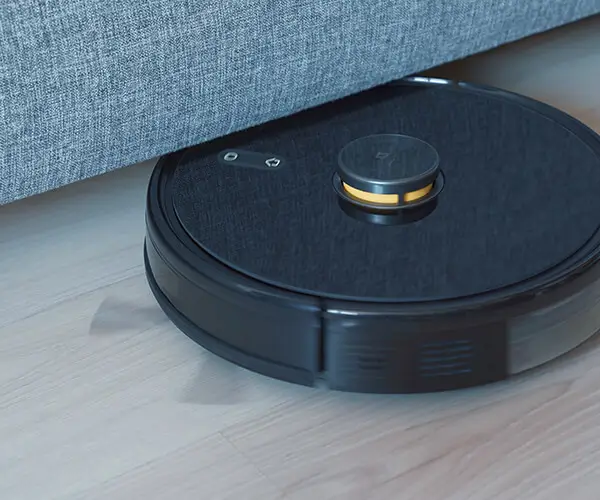Unlocking Precision and Power: The Ultimate Guide to Siemens Servo Motors with Gearboxes (Part 1)
In the rapidly evolving world of industrial automation, precision, efficiency, and reliability are no longer luxuries—they're necessities. Among the arsenal of tools that ensure these qualities, Siemens servo motors combined with gearboxes stand out as a shining example of engineering excellence. This pairing offers a powerful solution for a multitude of applications, from robotics to manufacturing machinery, integrating high performance with seamless control.

Understanding Siemens Servo Motors
First, let’s delve into what makes Siemens servo motors a top choice in the automation sector. Siemens, a global leader in electrical engineering and electronics, has built a reputation for manufacturing high-quality, innovative motors designed to provide precise motion control. Their servo motors are celebrated for their compact design, high efficiency, and dynamic response times, making them ideal for demanding industrial applications.
At their core, Siemens servo motors are designed to deliver highly accurate position, speed, and torque control. They are often used in CNC machines, robotics, conveyor systems, and packaging equipment—anywhere that requires meticulous motion accuracy and rapid responsiveness. Siemens servo motors are compatible with advanced control systems that manage their performance, ensuring smooth operation even under challenging conditions.
The Role of Gearboxes in Servo Systems
While servo motors are designed for direct-drive applications, integrating a gearbox can extend their capabilities significantly. Gearboxes serve as mechanical regulators, translating the motor's high-speed, low-torque rotation into low-speed, high-torque motion optimized for the application at hand.
The simple premise? Gearboxes adjust the motor's output to match real-world needs. When paired with a servo motor, a gear reducer can improve torque output, increase positional accuracy, and enable the motor to handle higher loads without sacrificing speed or efficiency. This fusion offers a flexible, adaptable solution, transforming a standard servo motor into a powerhouse capable of tackling more demanding tasks.
Advantages of Using Siemens Servo Motors with Gearboxes
There are many reasons why industries are choosing Siemens servo motors with gearboxes. Here are some standout benefits:
Enhanced Torque and Power Density: Gearing amplifies the motor's torque output, enabling it to move heavier loads or perform more strenuous tasks without increasing motor size. This is crucial in applications with space constraints or where high load capacity is essential.
Improved Positional Accuracy: Gearboxes can reduce backlash and minimize errors caused by mechanical slack, assuring highly precise positioning—vital in robotics, CNC machining, and semiconductor manufacturing.
Speed Control and Flexibility: While the servo motor provides rapid responsiveness, gearboxes allow for controlled, stable speeds tailored to specific processes, increasing process stability and product quality.
Extended Service Life: Properly selected gearboxes help distribute mechanical stresses, reducing wear and tear on the servo motor. Siemens gearboxes are engineered for durability, meaning a longer lifespan and less downtime.
Energy Efficiency: Pairing a high-quality servo motor with the right gearbox minimizes energy losses and optimizes power usage, contributing to cost savings and sustainability.
System Integration and Compatibility: Siemens’ extensive range of servo motors and gear reducers are designed to work seamlessly together, with integrated control algorithms that ensure precise synchronization and system harmony.
Common Types of Gearboxes Used with Siemens Servo Motors
Choosing the right gearbox depends on the application specifics—load, speed, environment, and accuracy requirements. Some of the most common gearbox types paired with Siemens servo motors include:
Helical Gearboxes: Known for smooth operation, high efficiency, and quiet performance—ideal for high-precision applications such as robotics and CNC machines.
Planetary Gearboxes: Offering high torque capacity in compact sizes, planetary gearboxes are favored in servo systems demanding high load-carrying ability and positional accuracy.
Worm Gearboxes: Suitable for applications requiring a high reduction ratio and self-locking features, such as positioning systems with a need for holding torque without continuous power.
Herringbone Gearboxes: Providing excellent load distribution and minimal backlash, these are often used in heavy-duty machinery requiring stable and precise movement.
Application Highlights
Industries benefiting immensely from Siemens servo motors with gearboxes span various sectors:
Manufacturing Automation: Conveyors, pick-and-place systems, and robotic arms operate with precision and speed, thanks to servo-gearbox integration.
Automotive Industry: Robots assembling cars rely on high-torque, high-accuracy servo systems to perform repetitive tasks with consistency.
Aerospace and Defense: High-performance servo systems control delicate processes requiring extreme precision and reliability.
Semiconductor Fabrication: Precision motion and stability are non-negotiable, making servo motor and gearbox combinations ideal.
Energy and Wind Power: In renewable energy setups, servo systems optimize positioning and tracking systems, improving overall efficiency.
Choosing the Right Siemens Servo Motor with Gearbox
Selecting the correct combination involves considering several critical parameters:
Load and Torque Requirements: Understand the maximum load and torque demands of your application to identify appropriately rated servo motors and gearboxes.
Speed Ranges: Match the required operation speeds with the servo-motor capabilities and gearbox gear ratios for optimal performance.
Accuracy Needs: Determine the precision required for your task—this influences the choice of gearbox type and servo motor specifications.
Environmental Conditions: Consider temperature ranges, exposure to dust or moisture, and operational vibrations. Siemens offers specialized motors and gearboxes suitable for harsh environments.
Control Compatibility: Ensure the servo system integrates seamlessly with your existing control systems, including PLCs and drives.
Looking Ahead
The synergy between Siemens servo motors and gearboxes continues to evolve, driven by advancements in motor design, control algorithms, and gear manufacturing. Innovations in materials, such as composite gears and magnetic encoders, enhance durability and precision, pushing the boundaries of what automated systems can achieve.
In the next segment, we will explore detailed case studies, installation best practices, maintenance tips, and the future prospects of these sophisticated systems. Whether you're upgrading existing machinery or designing new automation solutions, understanding the nuances of Siemens servo motors paired with gearboxes is key to unlocking optimal performance and productivity.
Established in 2005, Kpower has been dedicated to a professional compact motion unit manufacturer, headquartered in Dongguan, Guangdong Province, China.




































